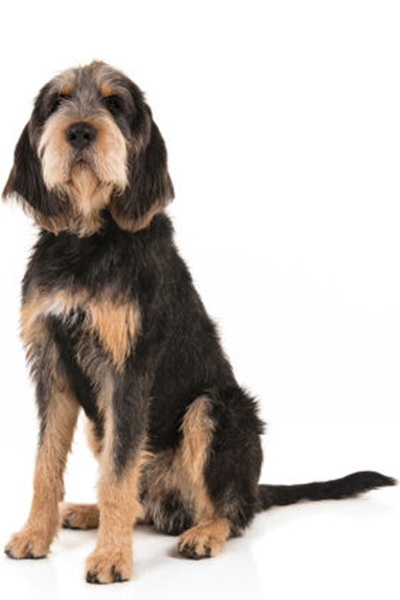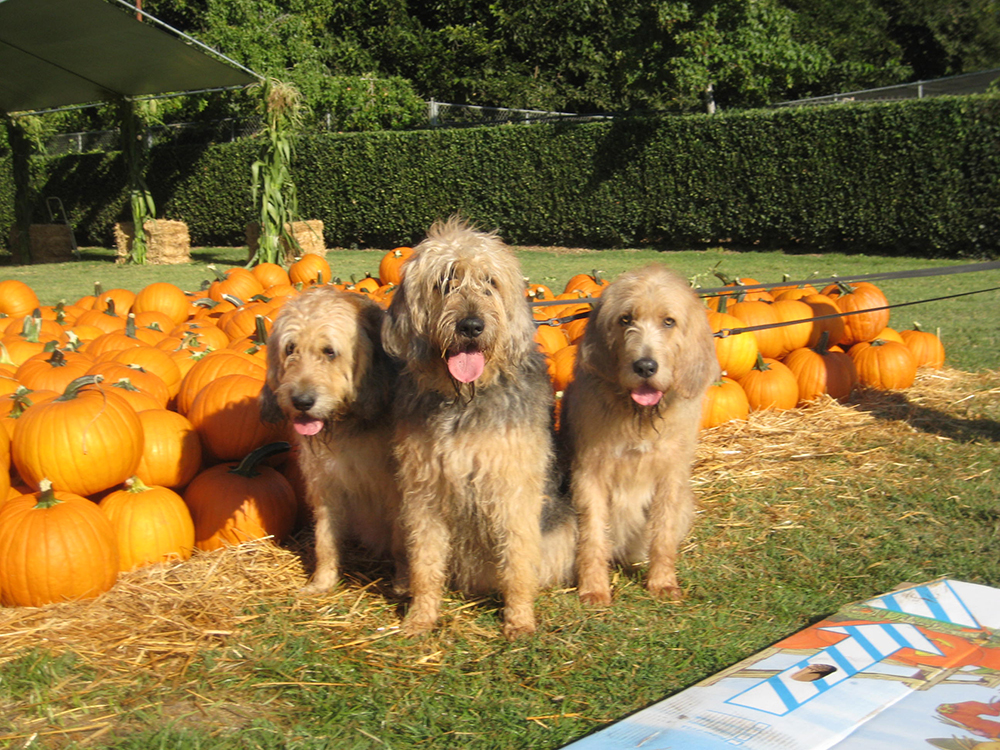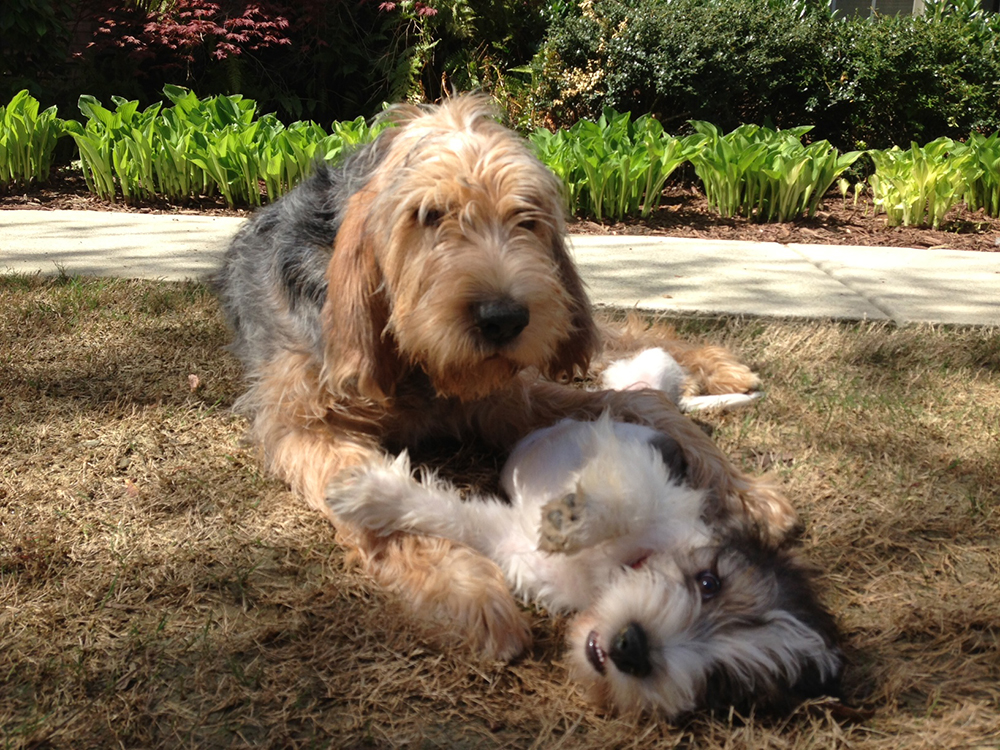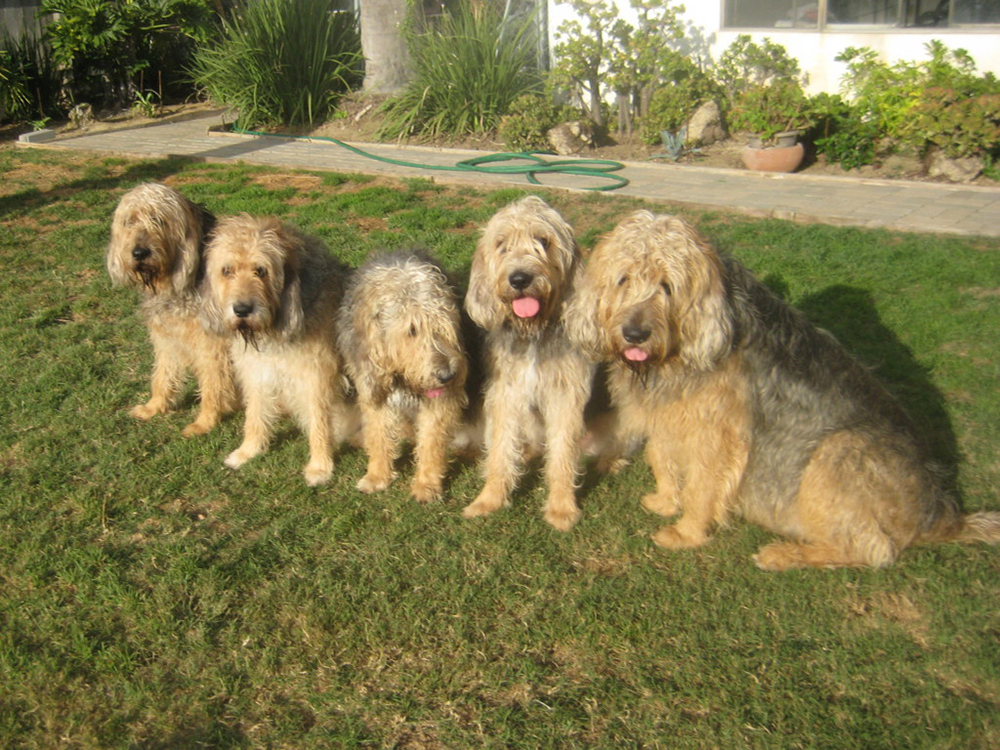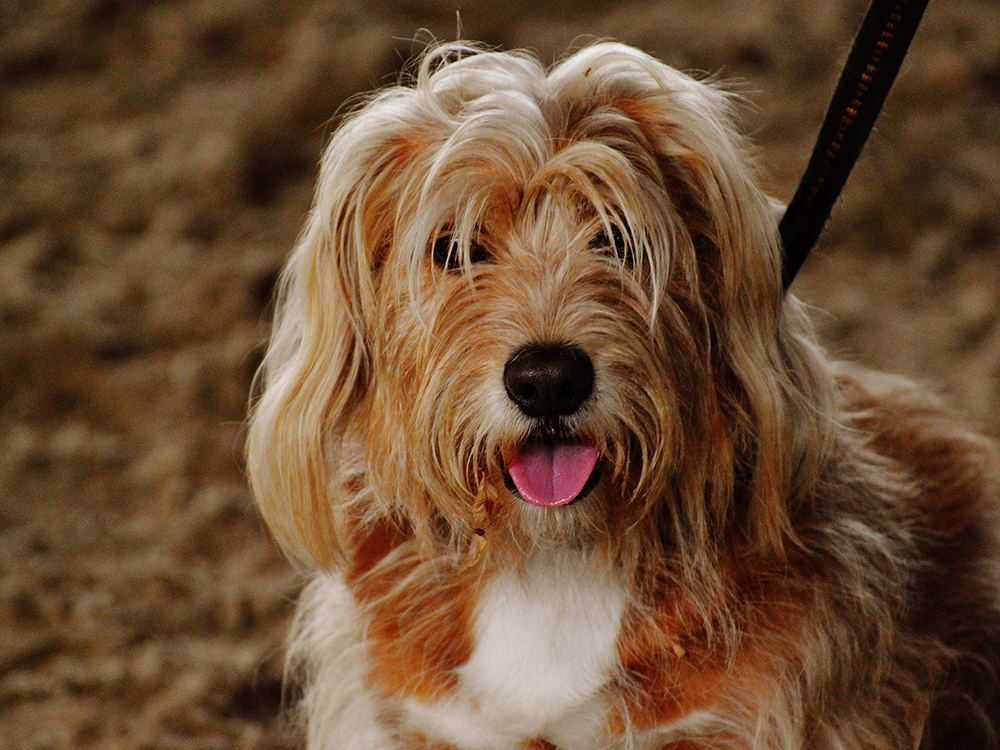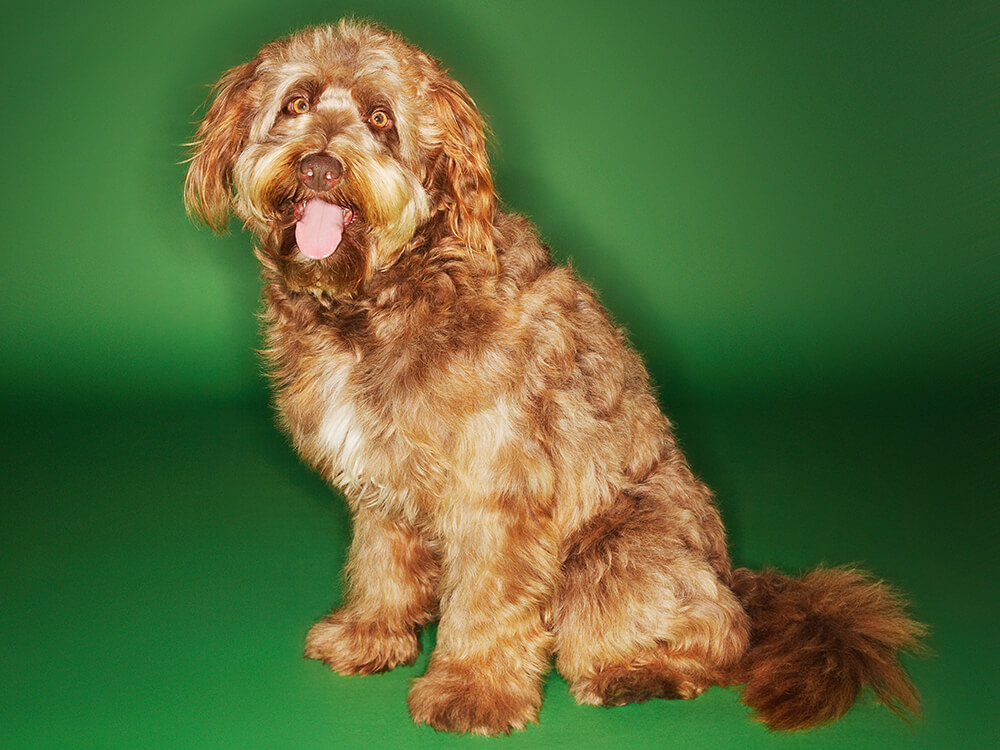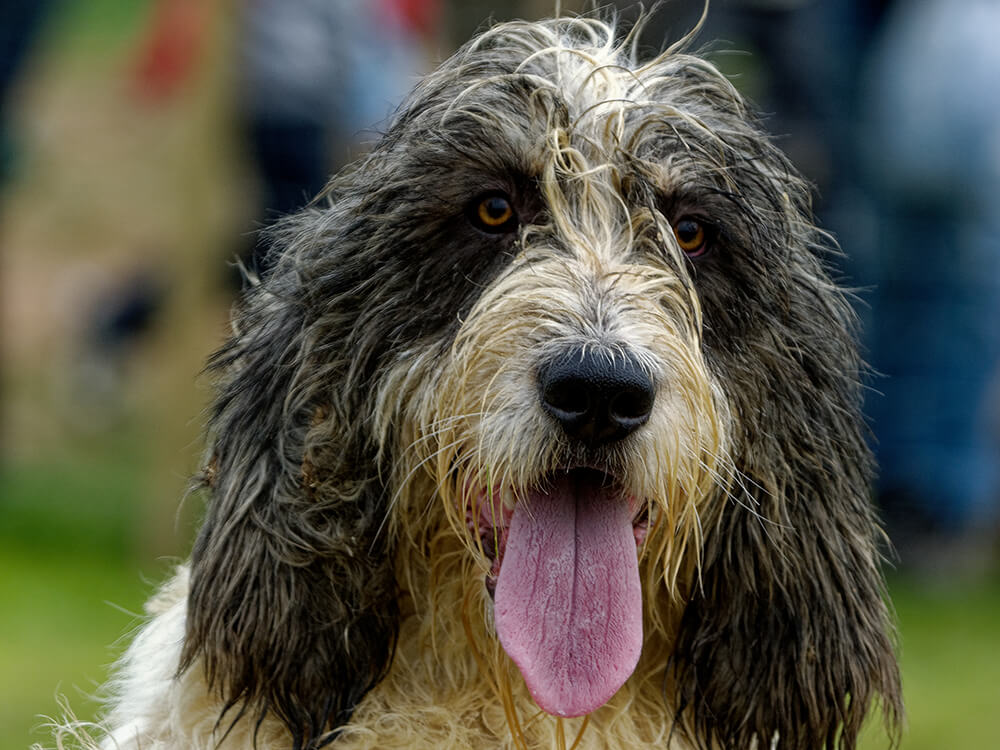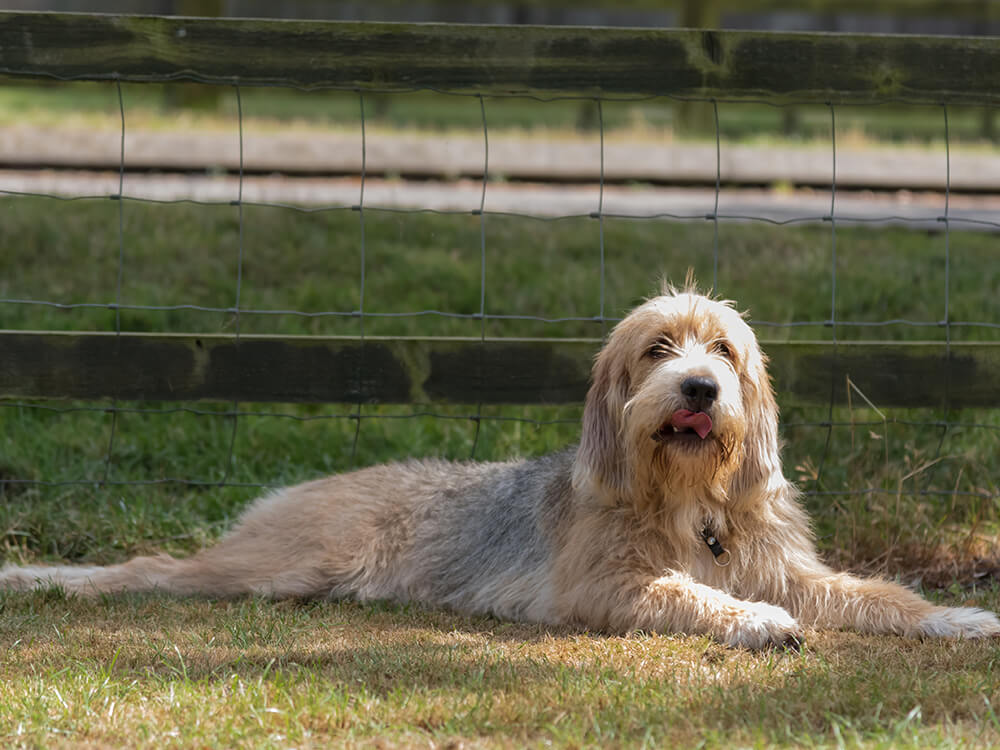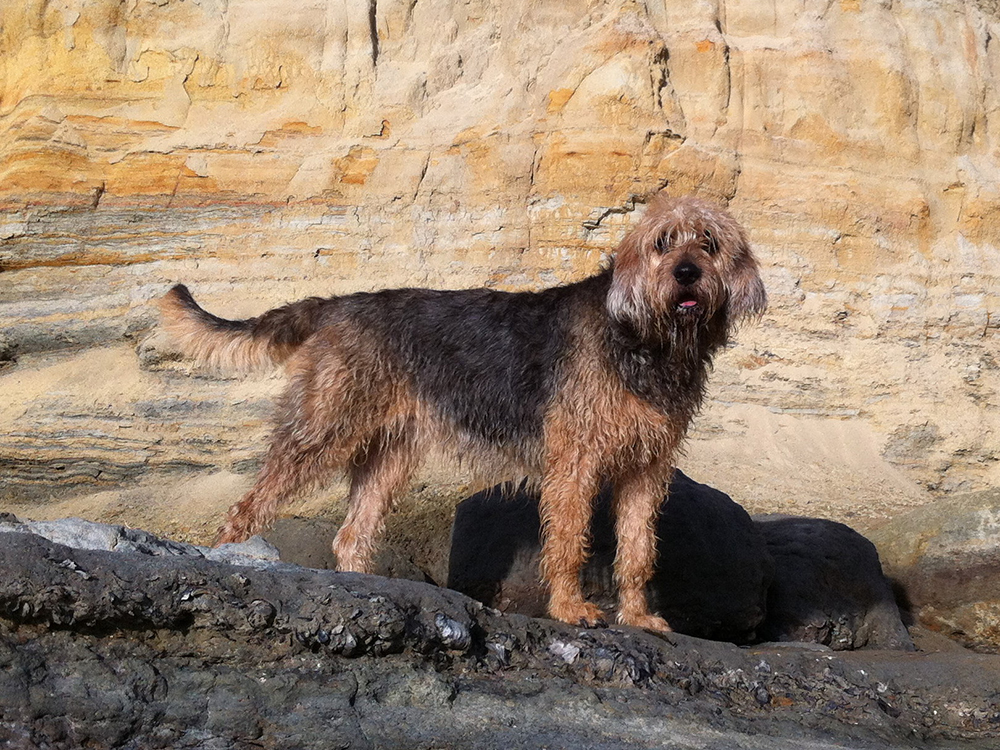
Otterhound Breed Pictures
Vital Breed Stats
| Height: | 60 - 65 cm M | 60 - 65 cm F |
| Weight: | 30 - 52 kg M | 30 - 52 kg F |
| Breed Group: | Toy Dog Group |
| Life Expectancy: | 10 - 13 years |
| KC Registered: | No |
Breed Characteristics
| Size: |  |
| Grooming: |  |
| Exercise Level: |  |
| Trainability: |  |
| Barking Level: |  |
| Good with Children: |  |
| Good with other pets: |  |
| Affectionate: |  |
| Protective: |  |
| Cost to Keep: |  |
Give a thumbs up if you love the Otterhound

0
More About the Breed
History
The Otterhound was developed in medieval England in 1175 with the purpose of hunting river otters, which are a threat to fishers. These Otterhounds hunted in packs and were first called "otter dogge." However, the modern Otterhound was not developed until the 18th century.
It is believed the modern Otterhound evolved by crossing three hounds such as the now extinct Southern Hound, the Basset Griffon Vendeen and the old St. Hubert Hound. Others thought that Otterhounds descended from the Bloodhound and the Griffon Nivernais cross in 1958.
Otter hunting was a favourite sport for many years. Bad King John enjoyed hunting with a pack of Otterhounds, and Queen Elizabeth I was named the first "Lady Master of Otterhounds." However, Otterhounds declined when Otter hunting was banned in England in 1978 and Scotland in 1980 due to water pollution. In the years that followed, Otterhounds were repurposed to mink hunting and drag hunts.
Today, the Otterhound has not recovered its popularity and is in fact limited in numbers that it has been placed on The Kennel Club's vulnerable native breed list. However, this does not signify that this breed is not an excellent choice for those who live an active and outdoor lifestyle.
Appearance
The Otterhound is a shaggy dog, wearing a rough double coat, beard and bushy eyebrows. The coat is comprised of a weather resistant topcoat and a woolly and oily undercoat designed to protect Otterhounds from cold water. Its coat can come in a variety of colours such as grizzle, sandy, red, white, wheaten, black & tan, blue & tan, black & cream, liver, tan & liver, and tan & white.
When it comes to its form, the Otterhound sports an imposing, dome-shaped and clean-cut head resembling that of the Bloodhound’s. It also has a square muzzle, a powerful jaw and deep flews. Nose and nostrils are both wide, while eyes are deep set and range in colour from hazel to black, complimenting the colour of its coat. Otterhounds have ears that are set low, reaching the tip of their nose. One of its unique features is the webbed feet that help the the breed in swimming.
Grooming
Temperament
The Otterhound is a large and active dog breed that loves to run and swim but has a bit of a stubborn streak. Regardless, Otterhounds are happy, sociable and easy-going dogs that like nothing more than to be in a loving home environment, being a part of the family household. However, they also loves to bark, which may prove to be challenging especially for your neighbours. Good thing though is that Otterhounds are great watchdogs but not guard dogs.
Otterhounds get on well with other dogs since they were bred to work in packs. However, they should never be trusted with small household pets, regardless if raised alongside them. Their prey drive is high, and anytime their instinct to chase will kick in. When it comes to kids, Otterhounds have are friendly and calm. However, their sheer size alone is enough to make sure that any interaction should be supervised.
Intelligence
Nutrition
- Senior and less active: up to 1,961 calories daily
- Typical adults: up to 2,206 calories daily
- Physically active/working dogs: up to 2,451 calories daily
Feeding
Health
Exercise
Cost of Ownership
Are you ready to be on a waitlist? Unfortunately, Otterhounds are quite rare. There are only a few litters of puppies registered per year, so you will have to wait. While waiting to buy an Otterhound, it pays to know how much budget you will need to put aside for the rest of its 12-year lifespan:
- You can adopt an Otterhound to save money but if you prefer to buy a well-bred puppy then prepare to pay no lower than £700.
- Pet insurance is an optional cost but one you will need to offset health costs in the future. Affordable pet insurance will cost around £26 to £65 a month, depending on your location and the dog's age and health.
- Food costs will cost you about £30 to £40 a month, excluding treats.
- Veterinary care is another huge expense, which includes regular vet visits, initial vaccinations, boosters and neutering. All these will cost you around £1,000 a year.
Is an Otterhound Right for You?
- The Otterhound is a large and active dog breed that loves to run and swim.
- It is happy, sociable, and easy-going, which also loves to be in a home environment.
- Its independent and stubborn nature makes it difficult to housetrain.
- Otterhounds are great watchdogs but terrible guard dogs.
- They are high-maintenance in the grooming department.
